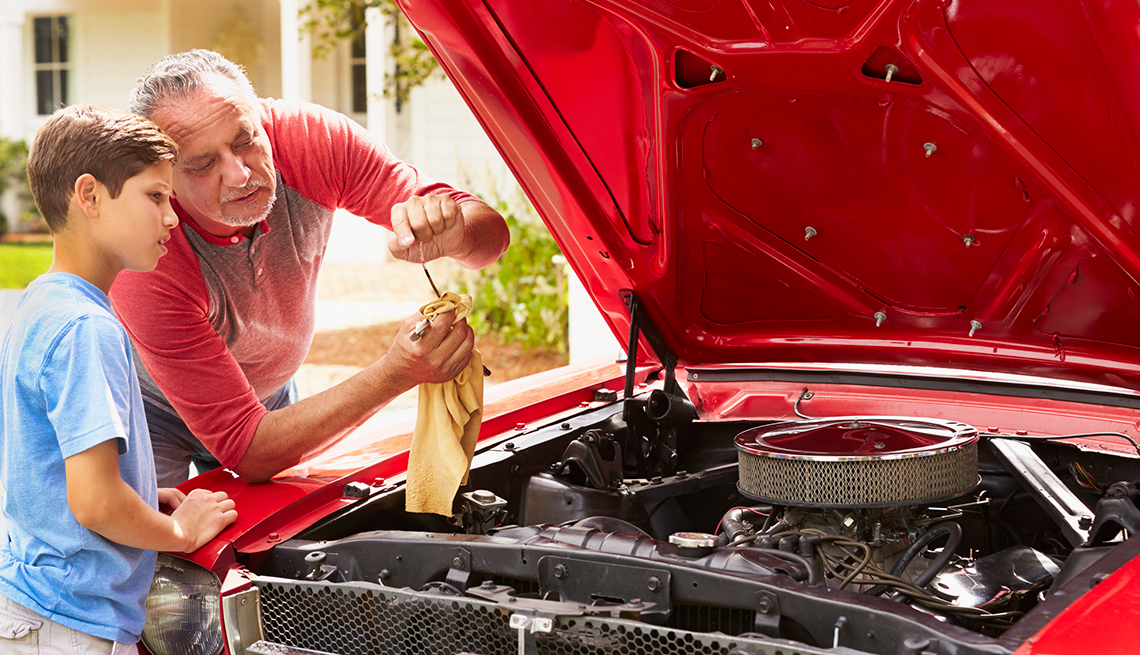
How to keep older cars running longer
- Select a language for the TTS:
- UK English Female
- UK English Male
- US English Female
- US English Male
- Australian Female
- Australian Male
- Language selected: (auto detect) - EN
Play all audios:

Here’s a to-do list for keeping the buggy going, based on the advice of pros with hands-on expertise. The list might seem daunting, but you don’t have to perform all the tasks at once, nor
do most of them need to be done very often. DRIVE IT. You can hear and feel if things are right. A good run up the highway every week or two burns off harmful moisture that has condensed in
the oil and the exhaust system. Short drives won’t do the trick. Hitting the road also keeps your tires from getting flat spots and your battery from dying of neglect. Let a trusted friend
drive, too, while you ride along. Someone else will hear and feel things you’ve grown used to and take for granted. Another advantange of being the passenger is that you sometimes can hear
noises or detect problems that you don’t notice when you’re behind the wheel. WASH IT. If your car starts to look like a clunker, you’ll treat it like one. Washing your baby with a
microfiber mitt and drying it with a microfiber towel are easiest on the paint; what’s more, you’ll feel and see body panels that need repair. If you run it through a commercial wash, pick
one that uses humans, not brushes, to do the job, advises Michael Stoops, senior global product and training specialist at Meguiar’s, which makes premium car-care products. CHECK IT. Just
before you head off for those weekly or biweekly drives, check the oil level in the engine using the under-hood oil dipstick. Do it when the car’s been sitting a couple of hours or more and
is level. “Nothing will destroy an engine faster than neglecting oil-level checks or fresh-oil changes,” auto consultant and car-shopping site Kelley Blue Book states. Automatic transmission
fluid also needs regular checking, though less often, via a separate dipstick. “Transmission fluid gets overlooked,” says Danner. The owner’s manual will tell you how, and how often, to
check yours; it differs among vehicles. CHANGE IT. How often? Consult the owner’s manual. “You never go wrong going by what the manufacturer says,” according to Danner. If you want to switch
to regular engine oil from pricey synthetic, that’s fine, he says, as long as the automaker doesn’t require synthetic. Just remember, you’ll have to change it more often than you would
synthetic. But switching to synthetic in a car that’s had a diet of regular oil for years could result in oil leaks and oil consumption, cautions Jeff Kaplon, also an auto instructor at
Rosedale Tech. KEEP IT COOL. On most cars, you can check if your antifreeze is low by looking at the overflow tank (a small semitransparent receptacle under the hood, usually near the
radiator). But you can’t tell anything else; the color of the coolant isn’t an indicator of its condition. “Antifreeze we have today will go quite a while, but it still becomes acidic over
time if you don’t drain it and flush it,” Kaplon says.
